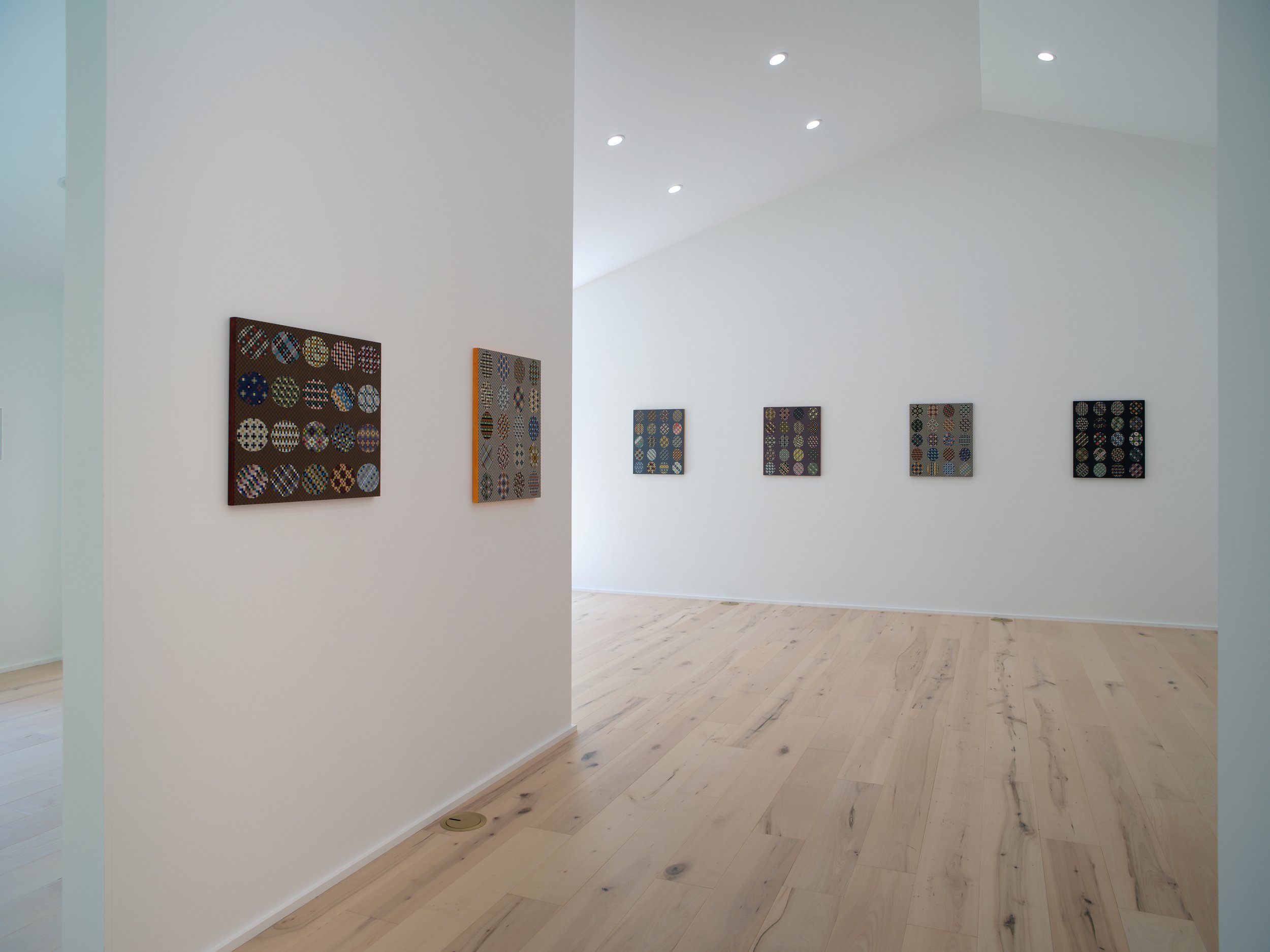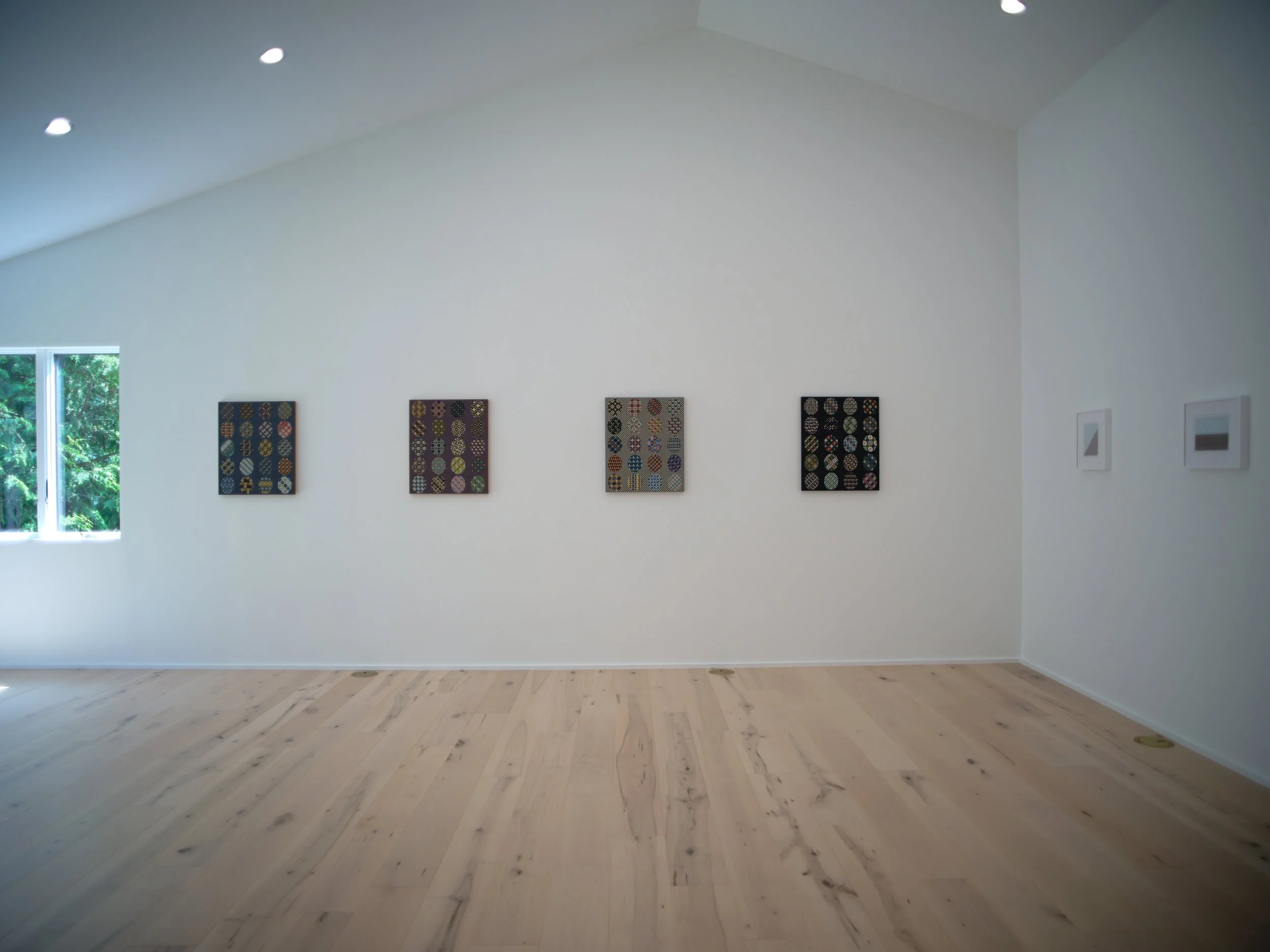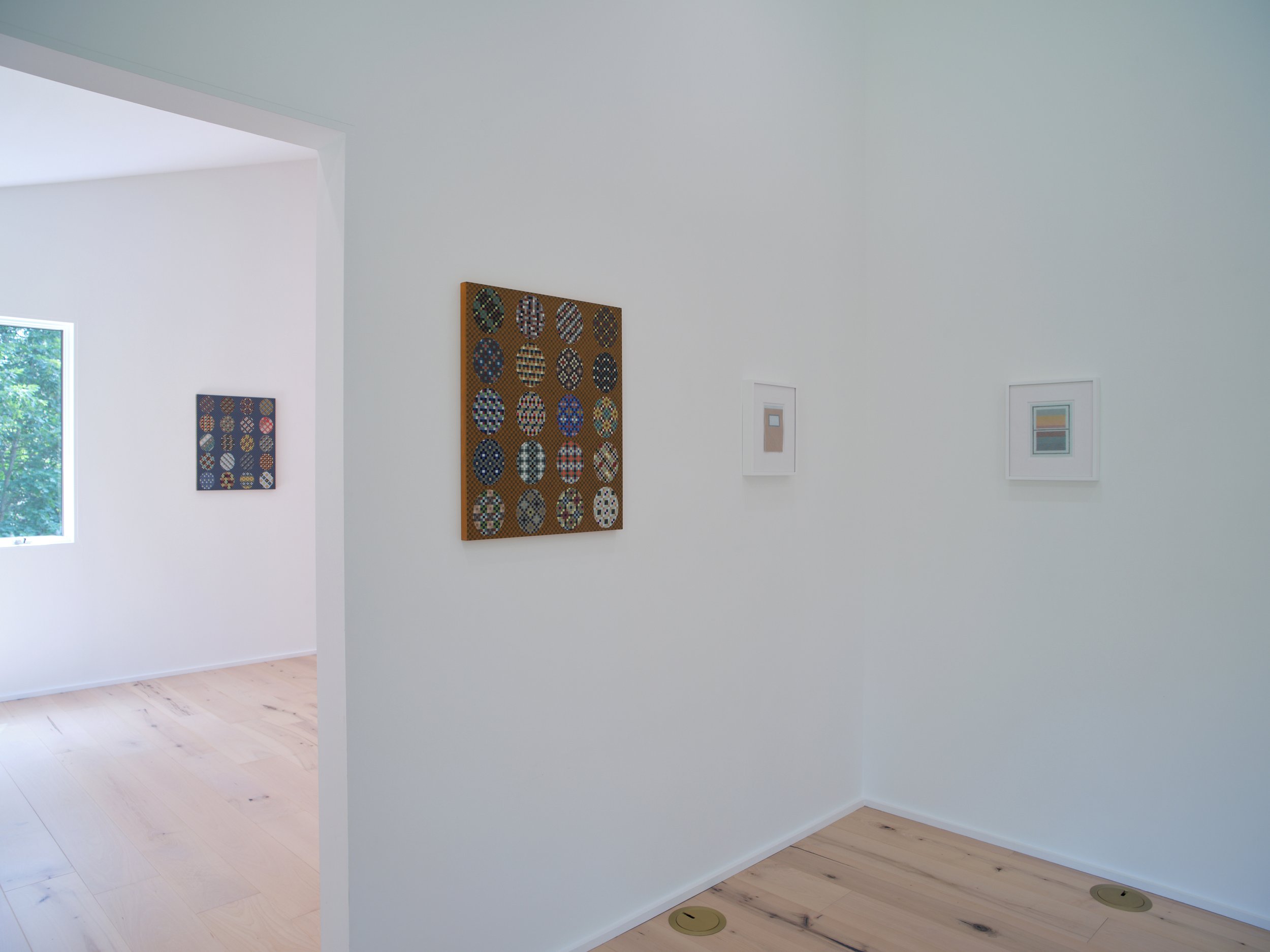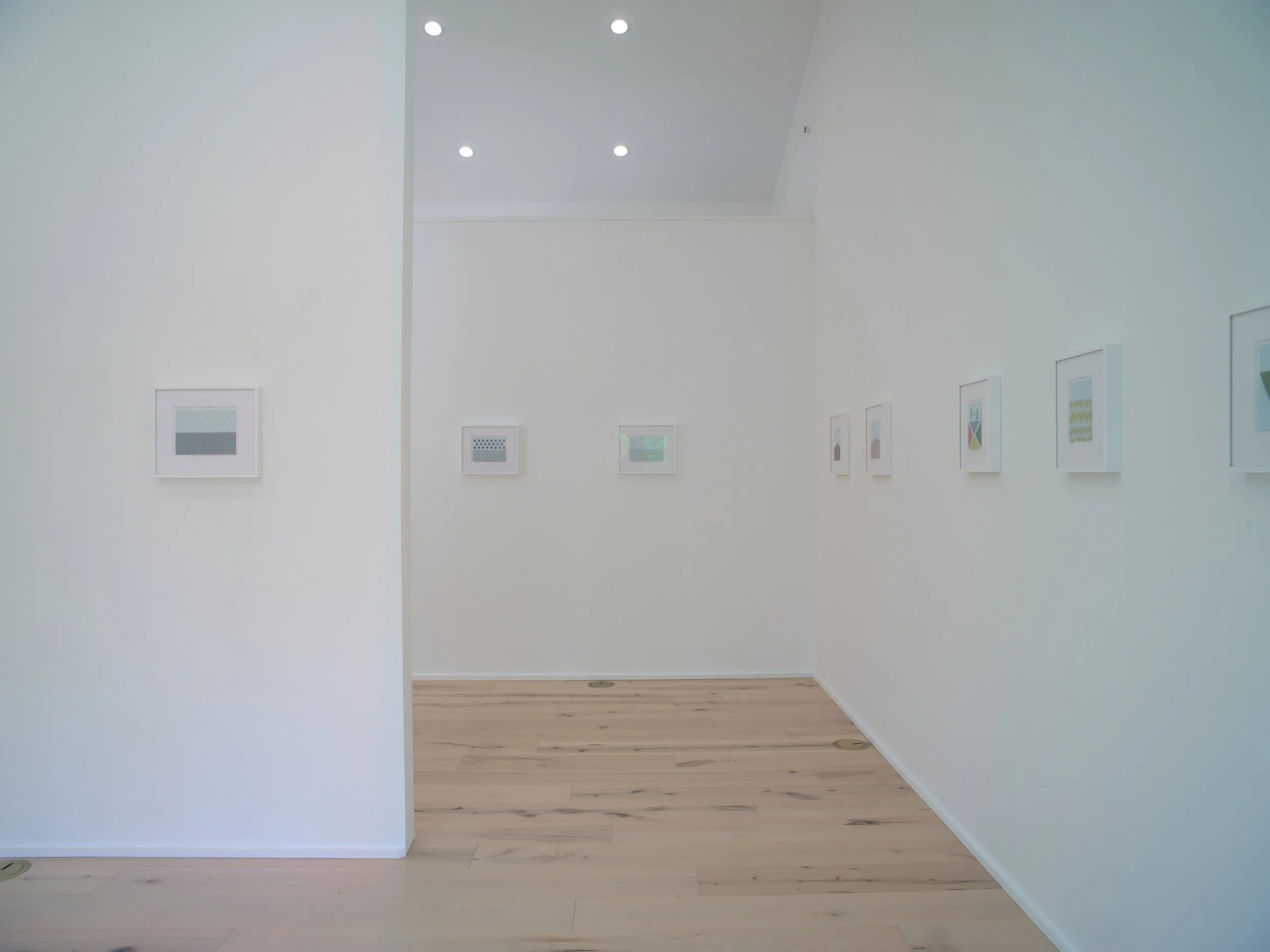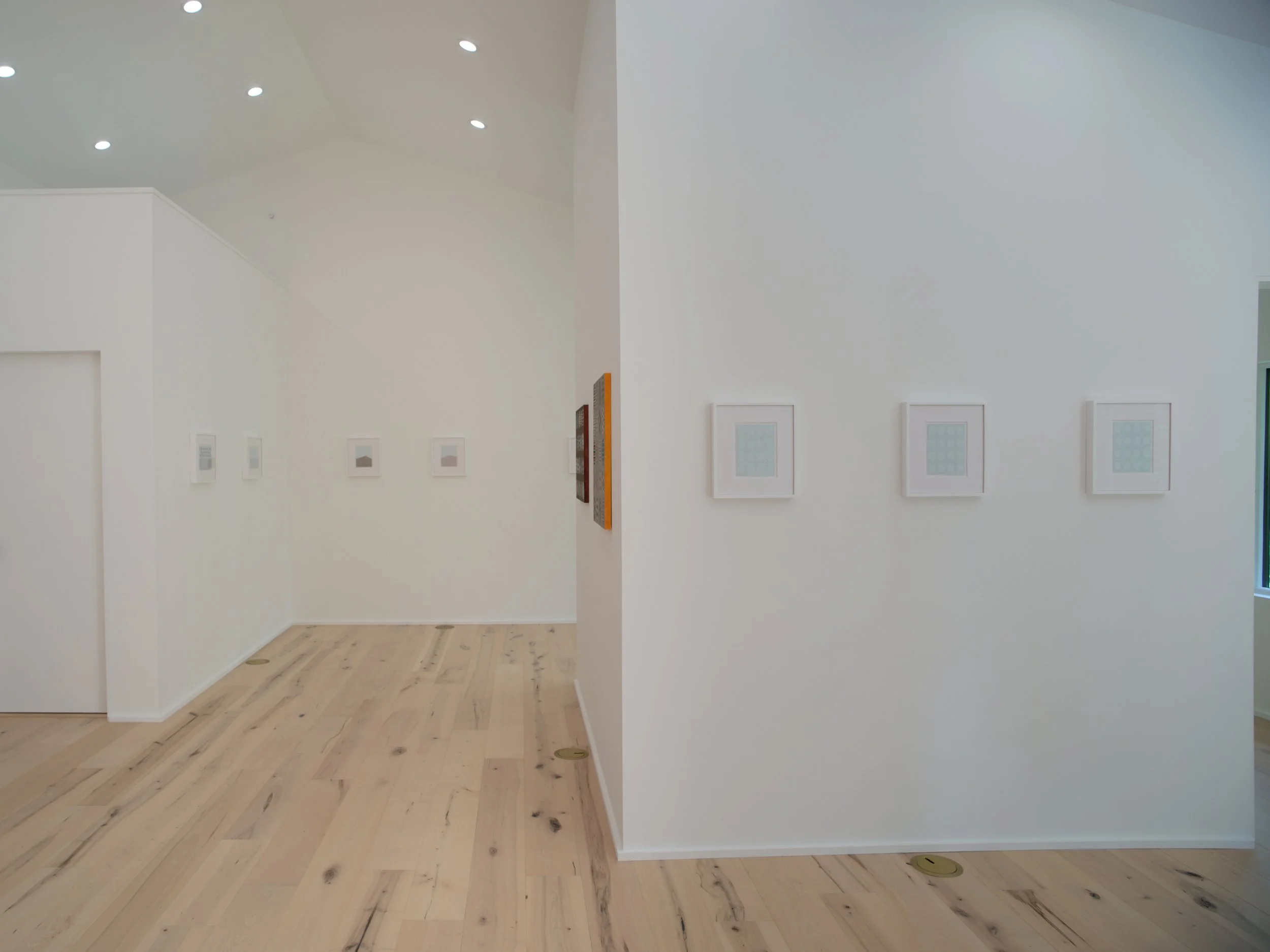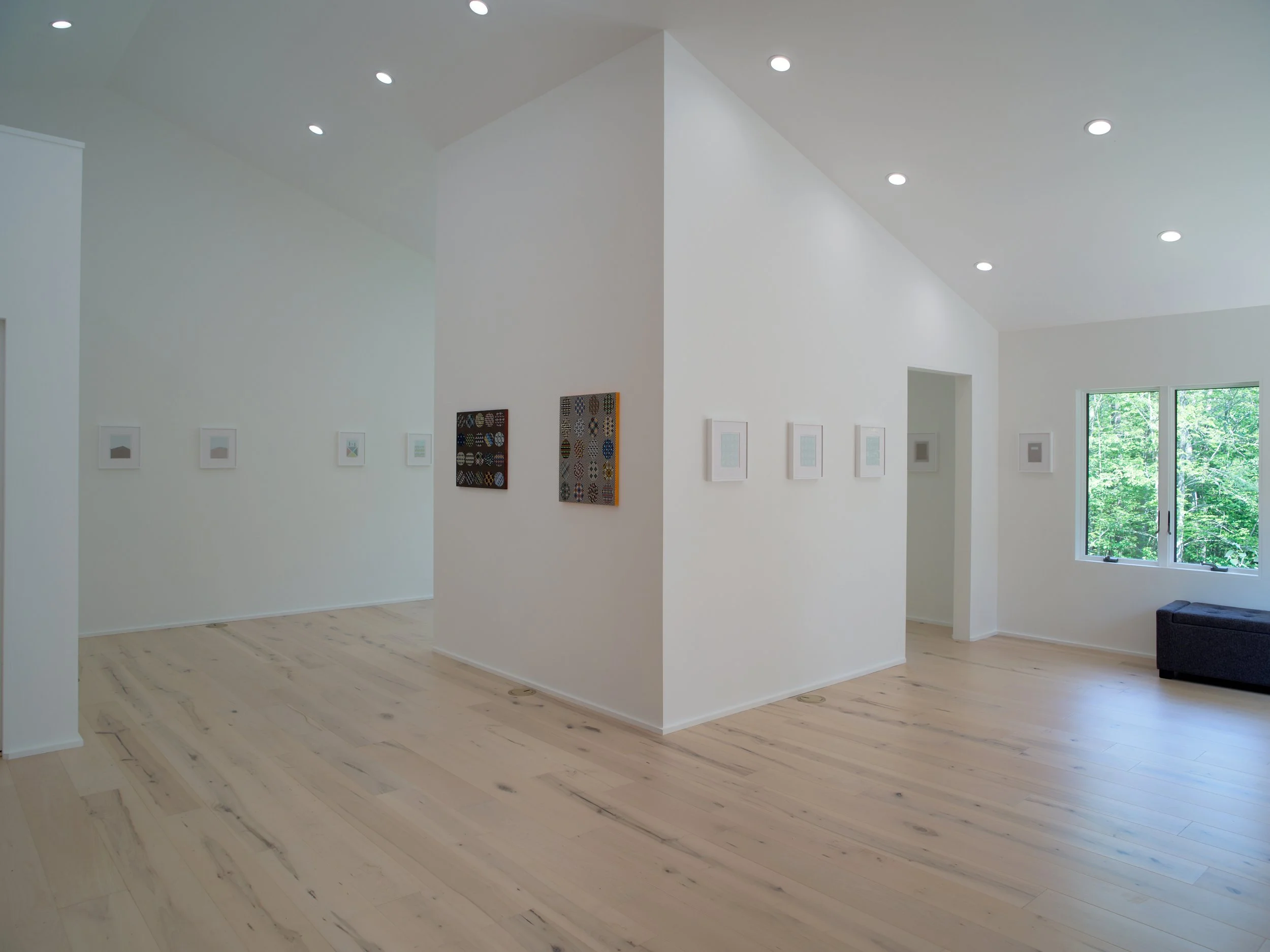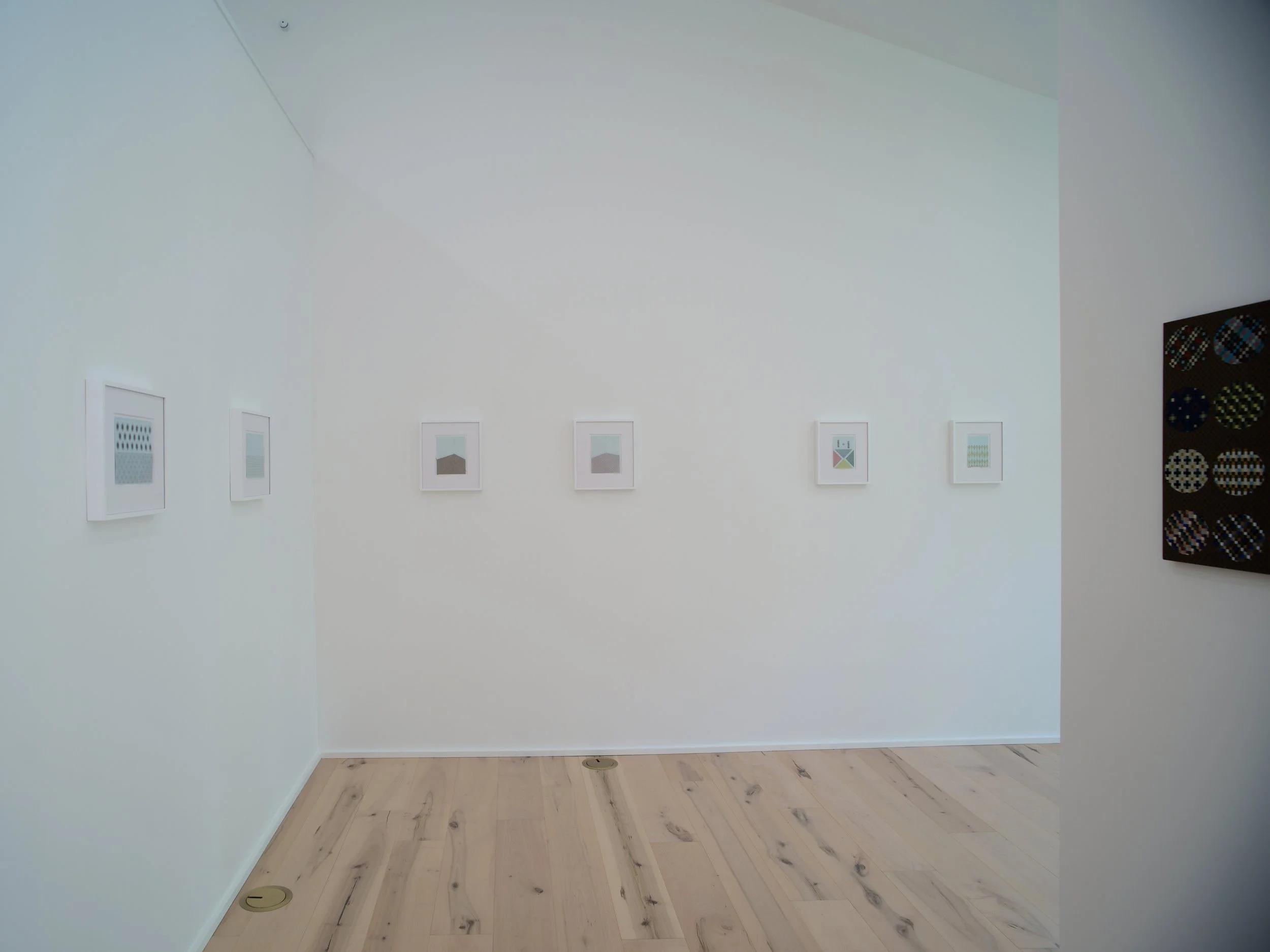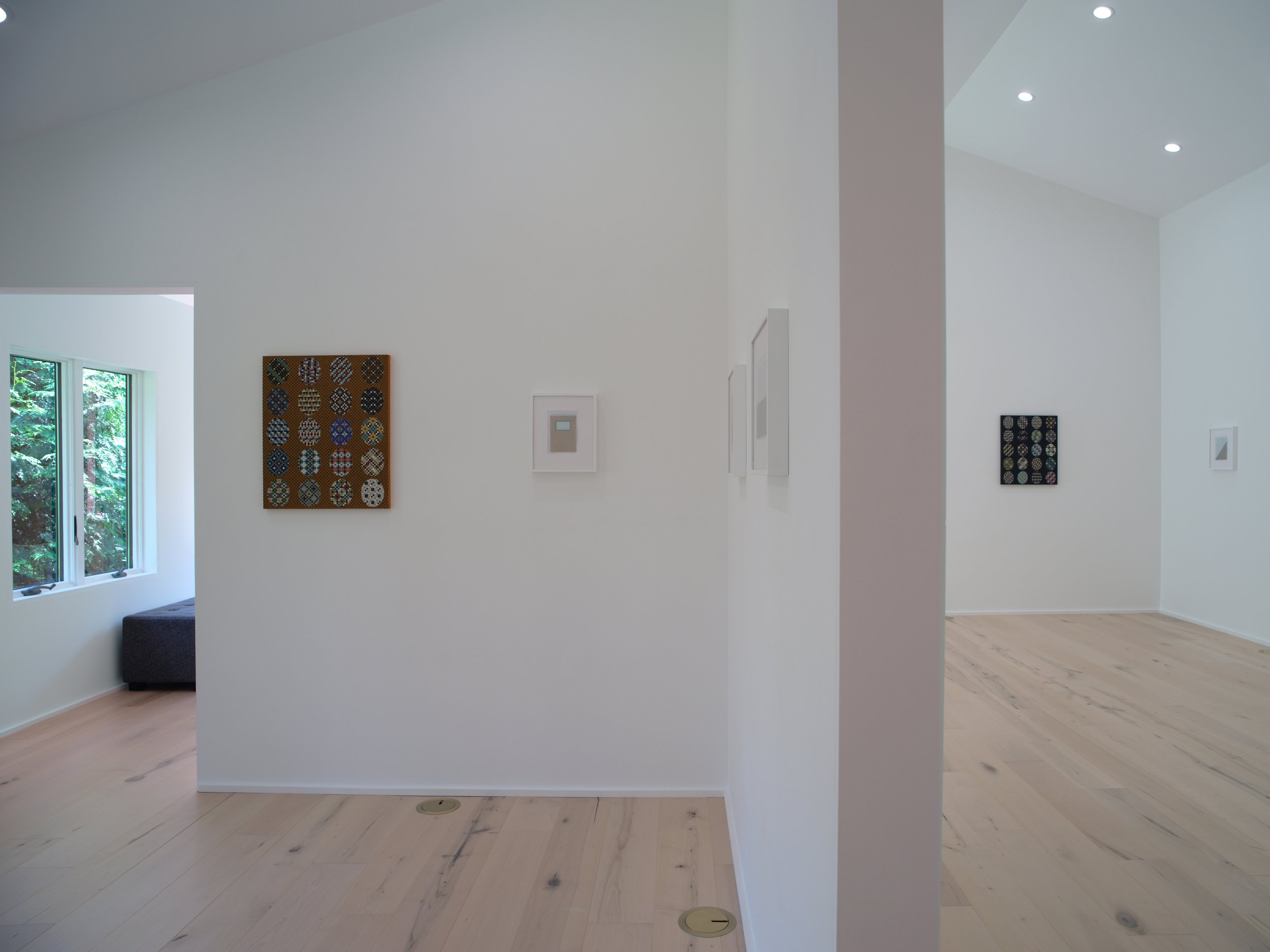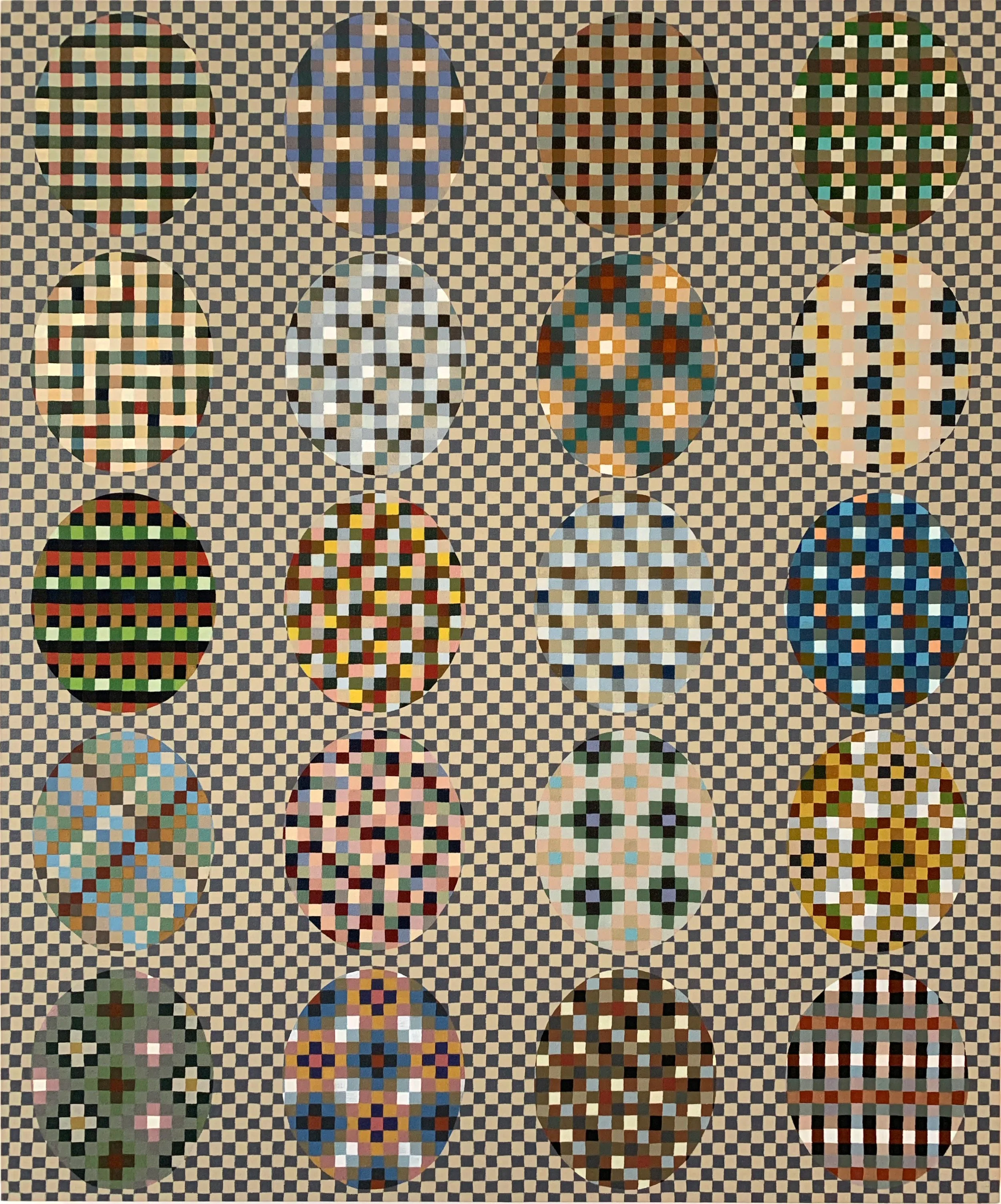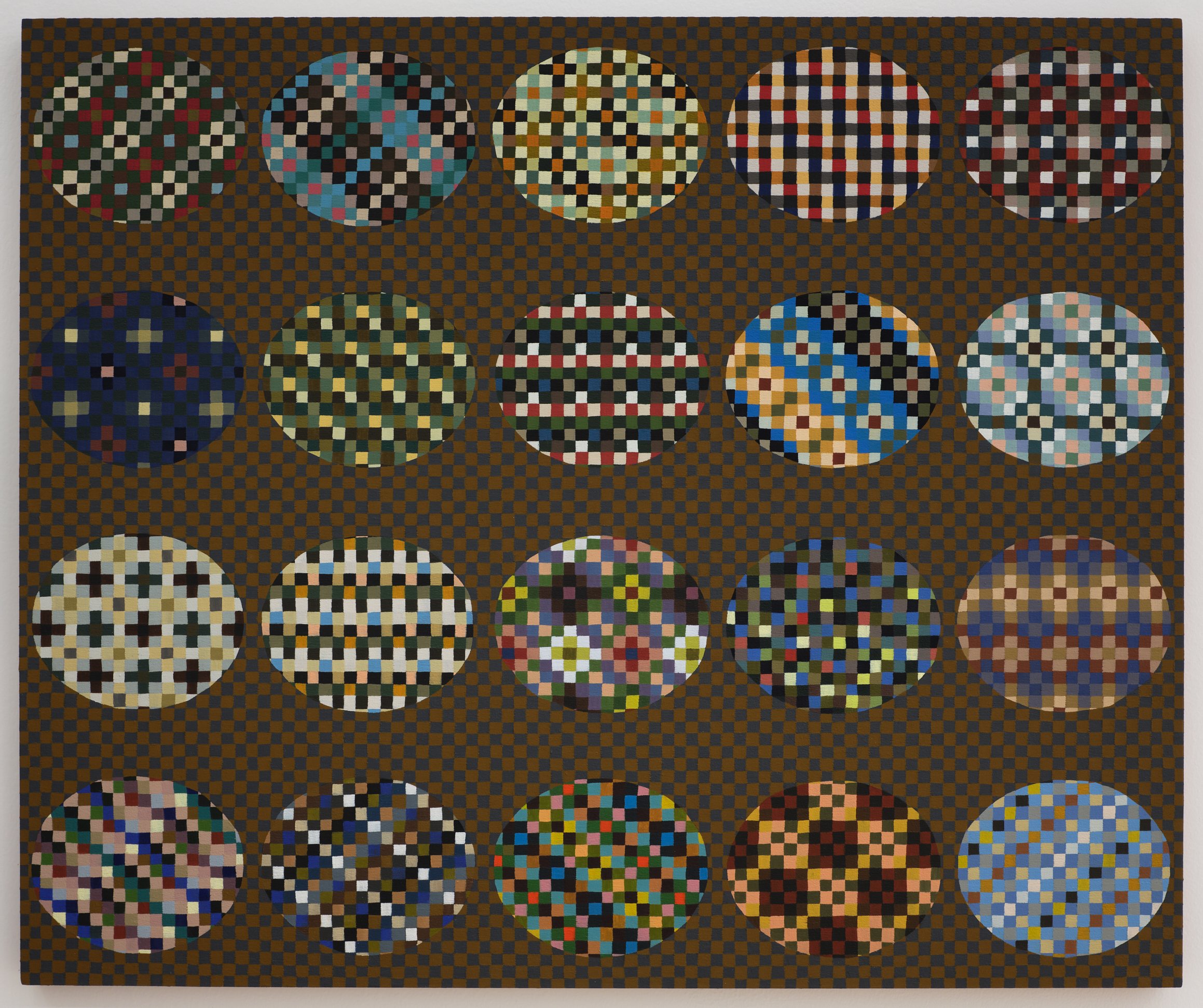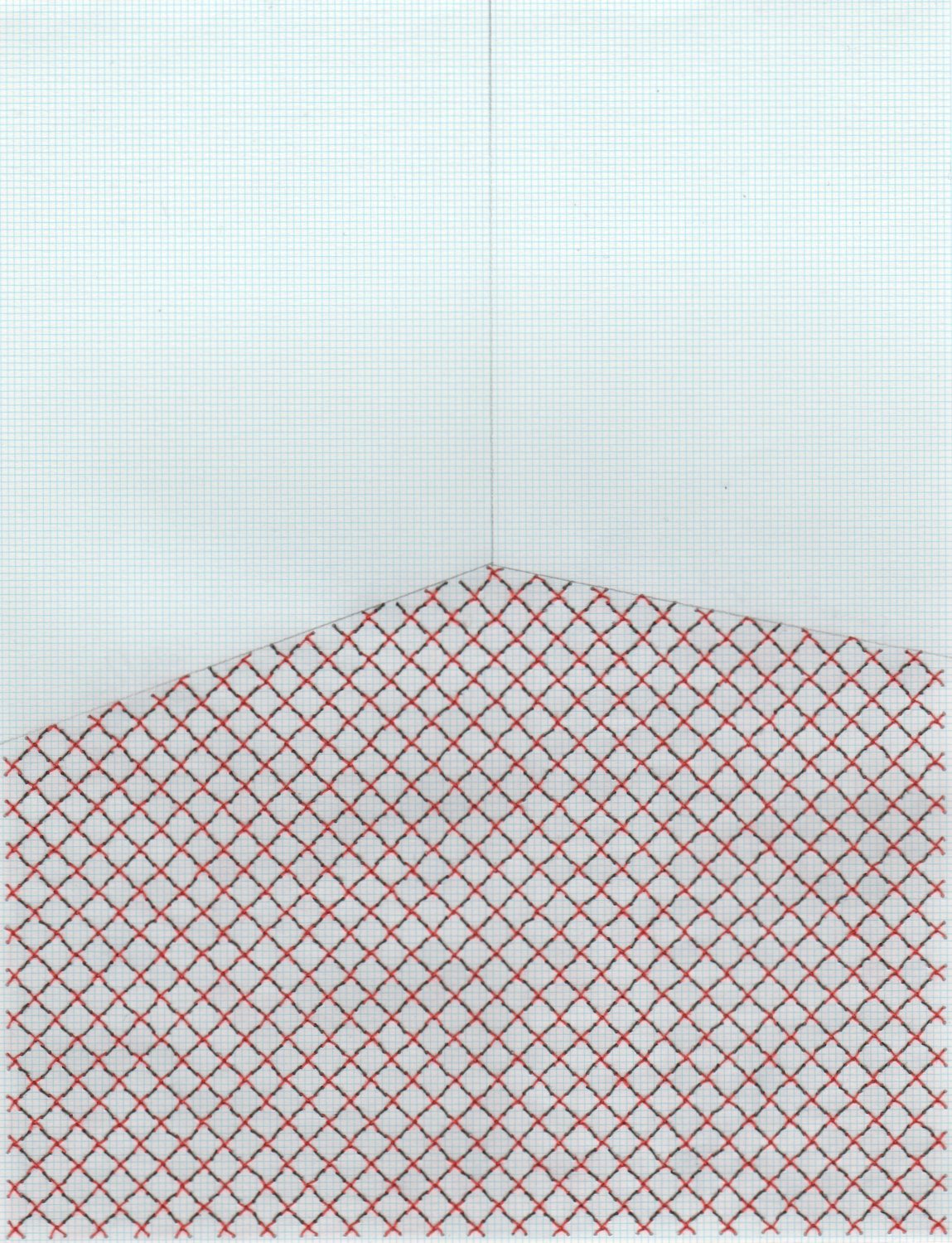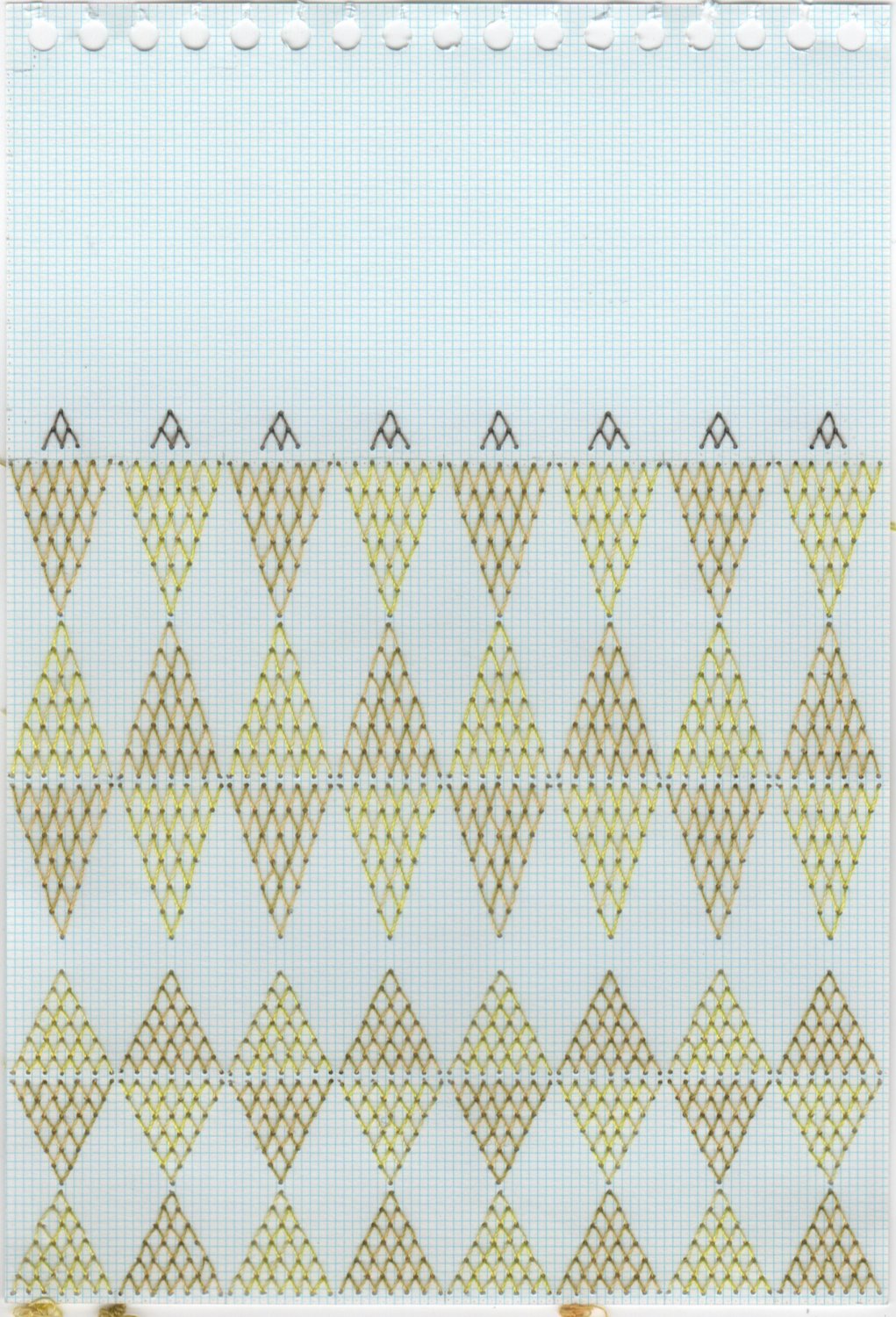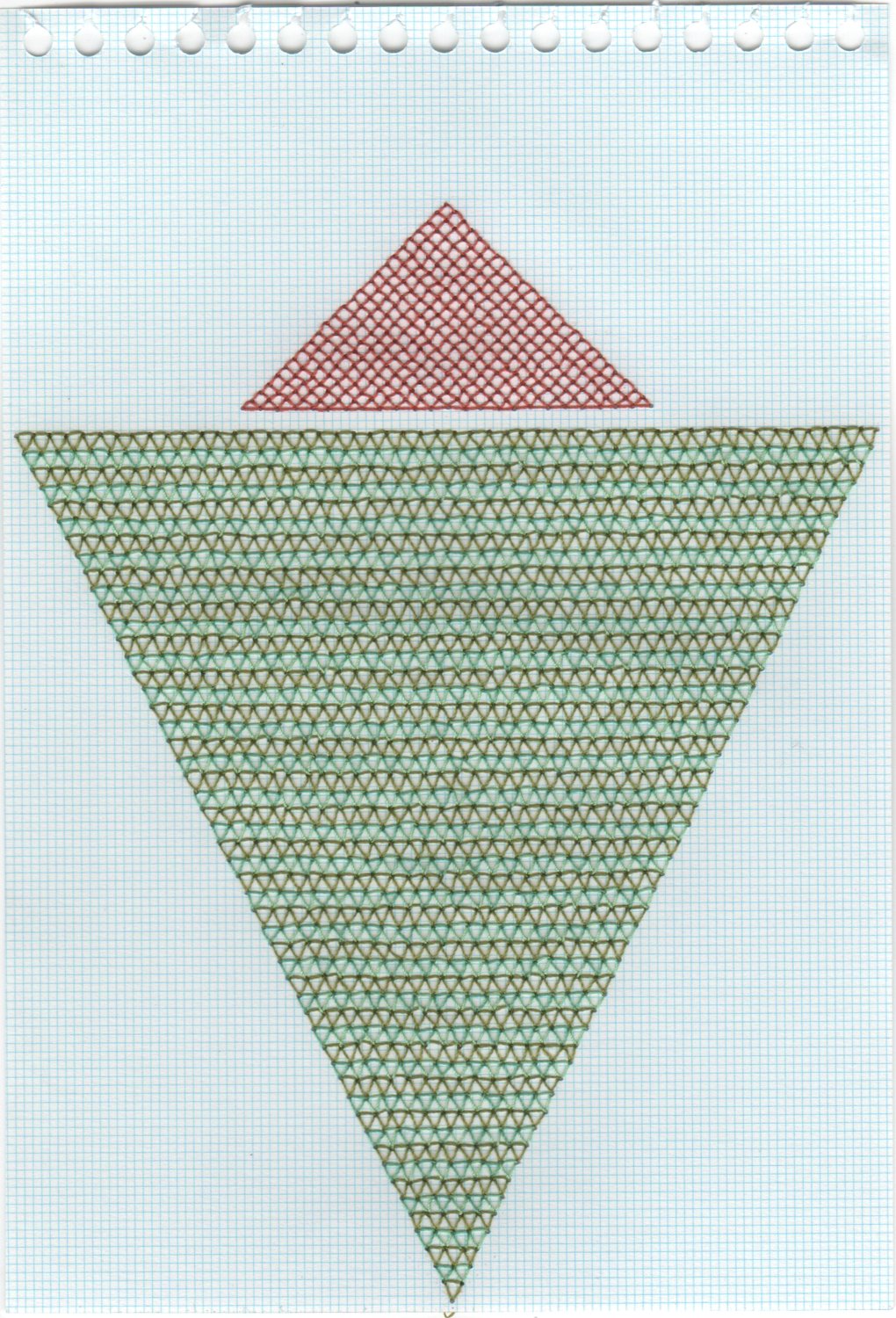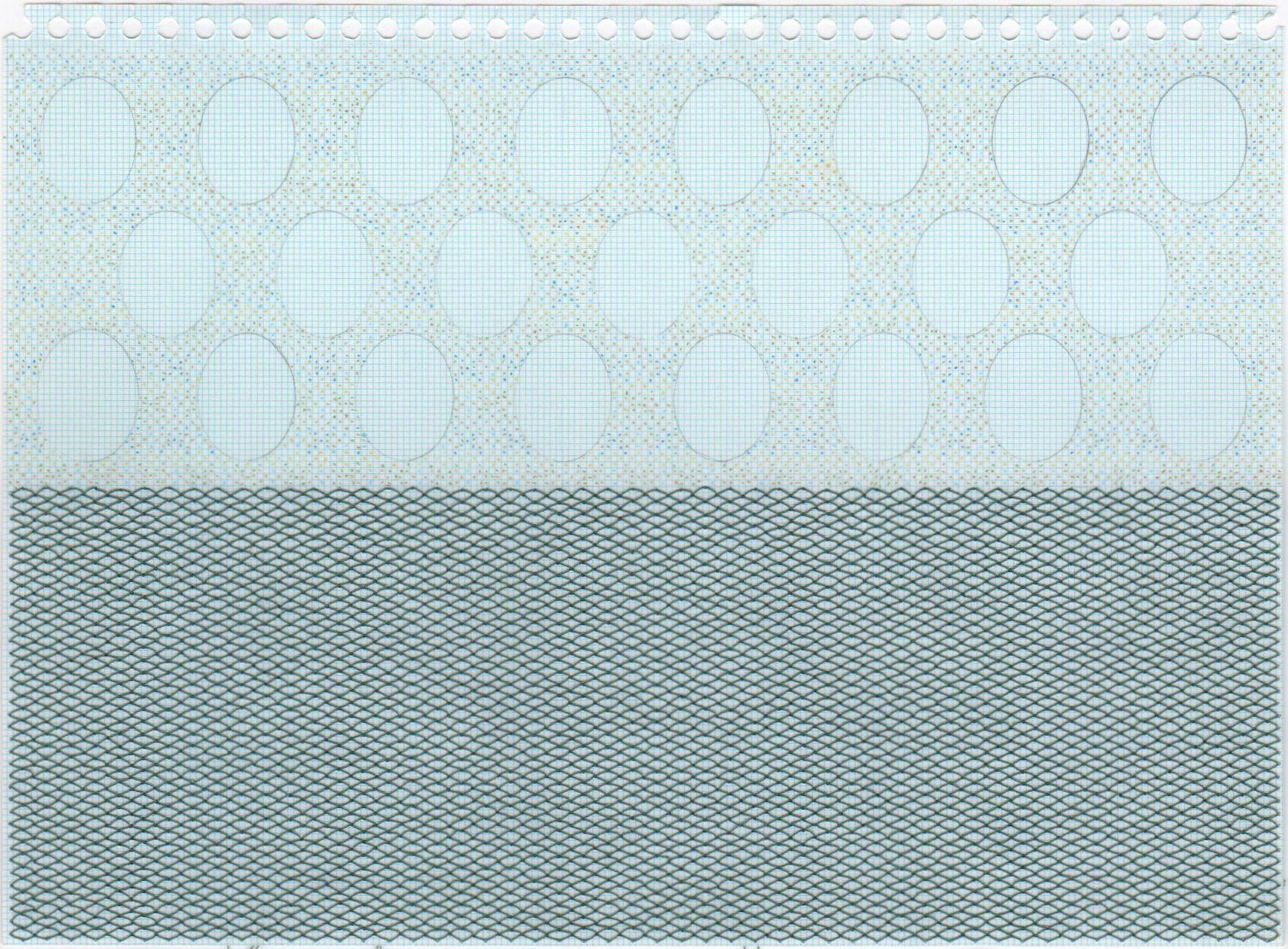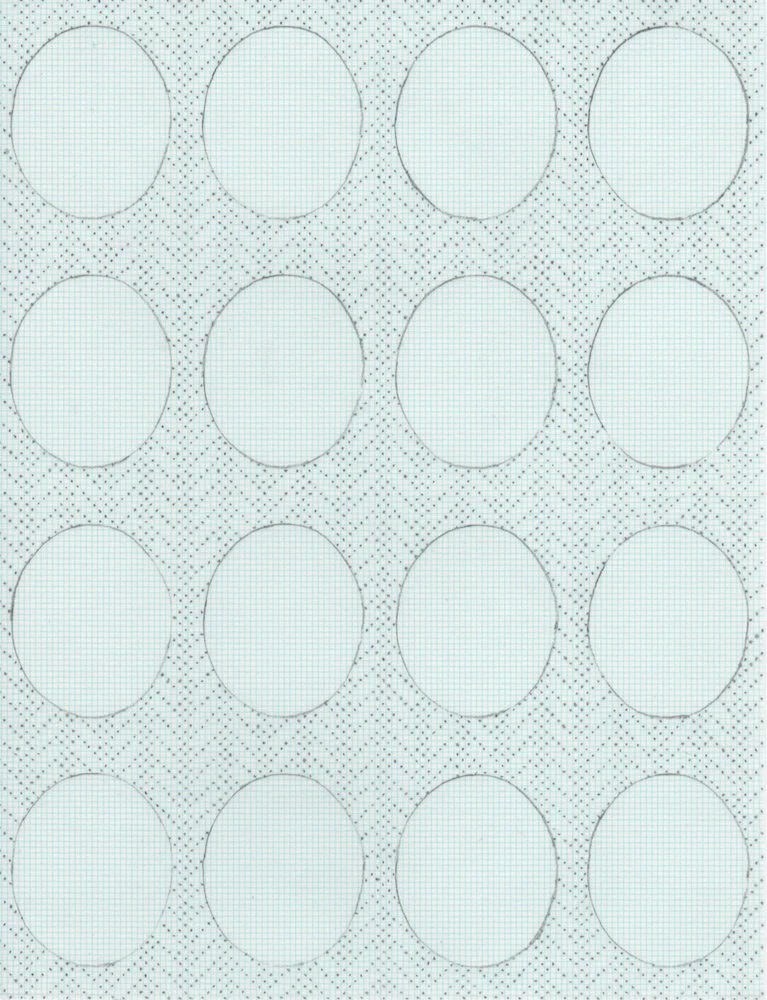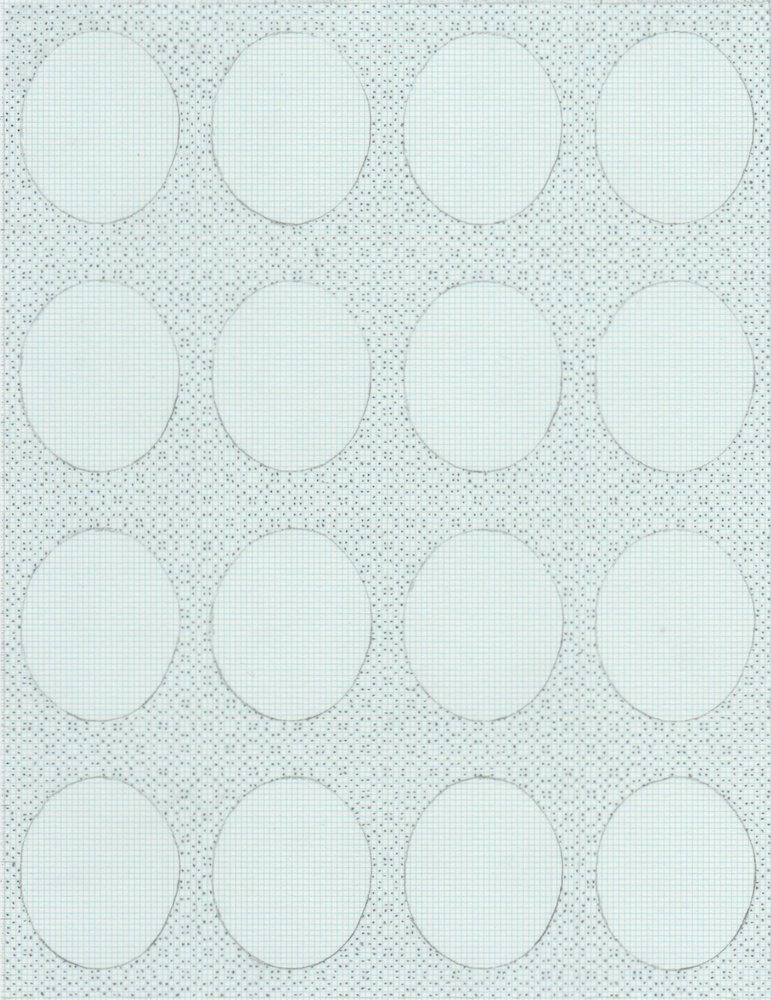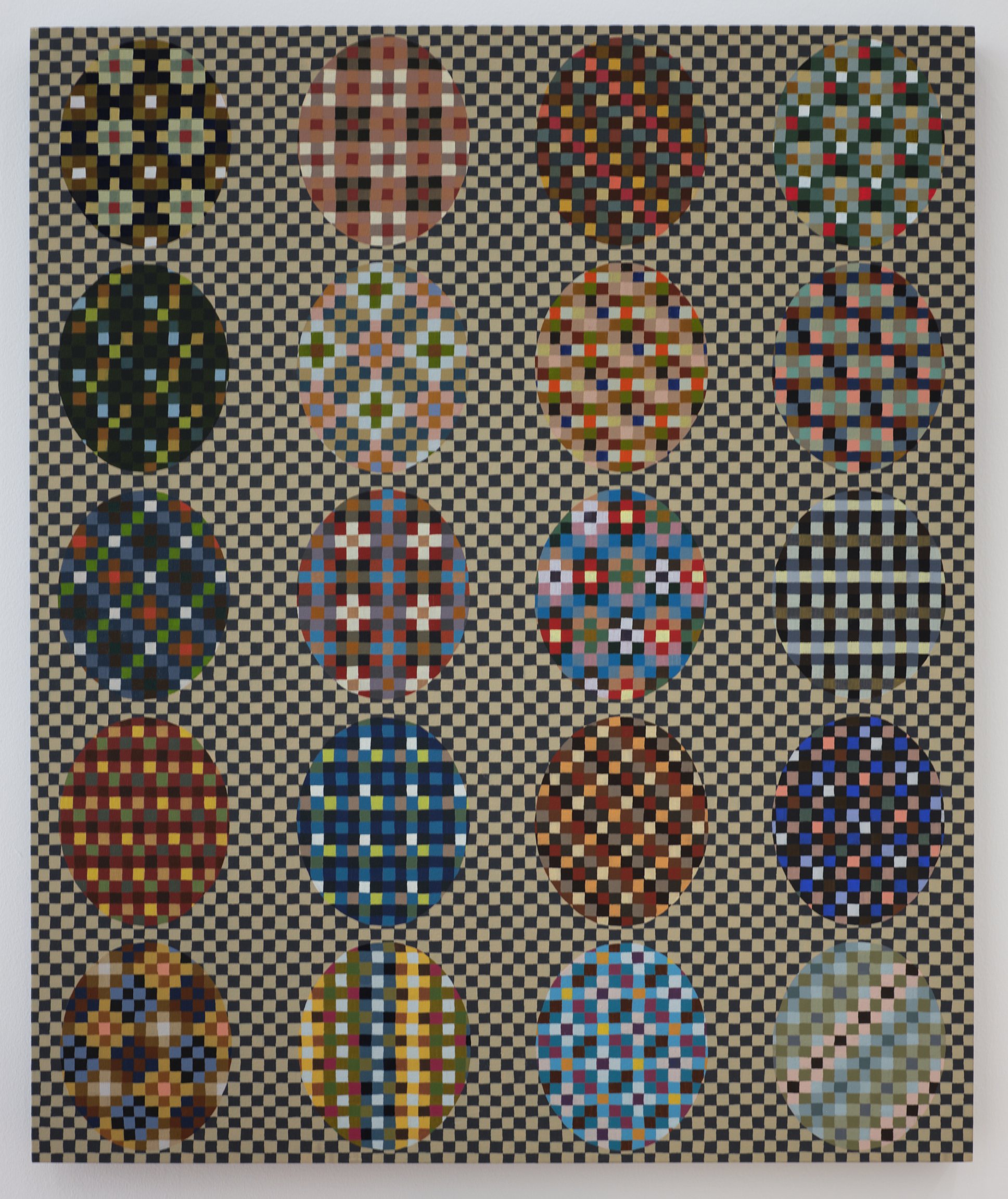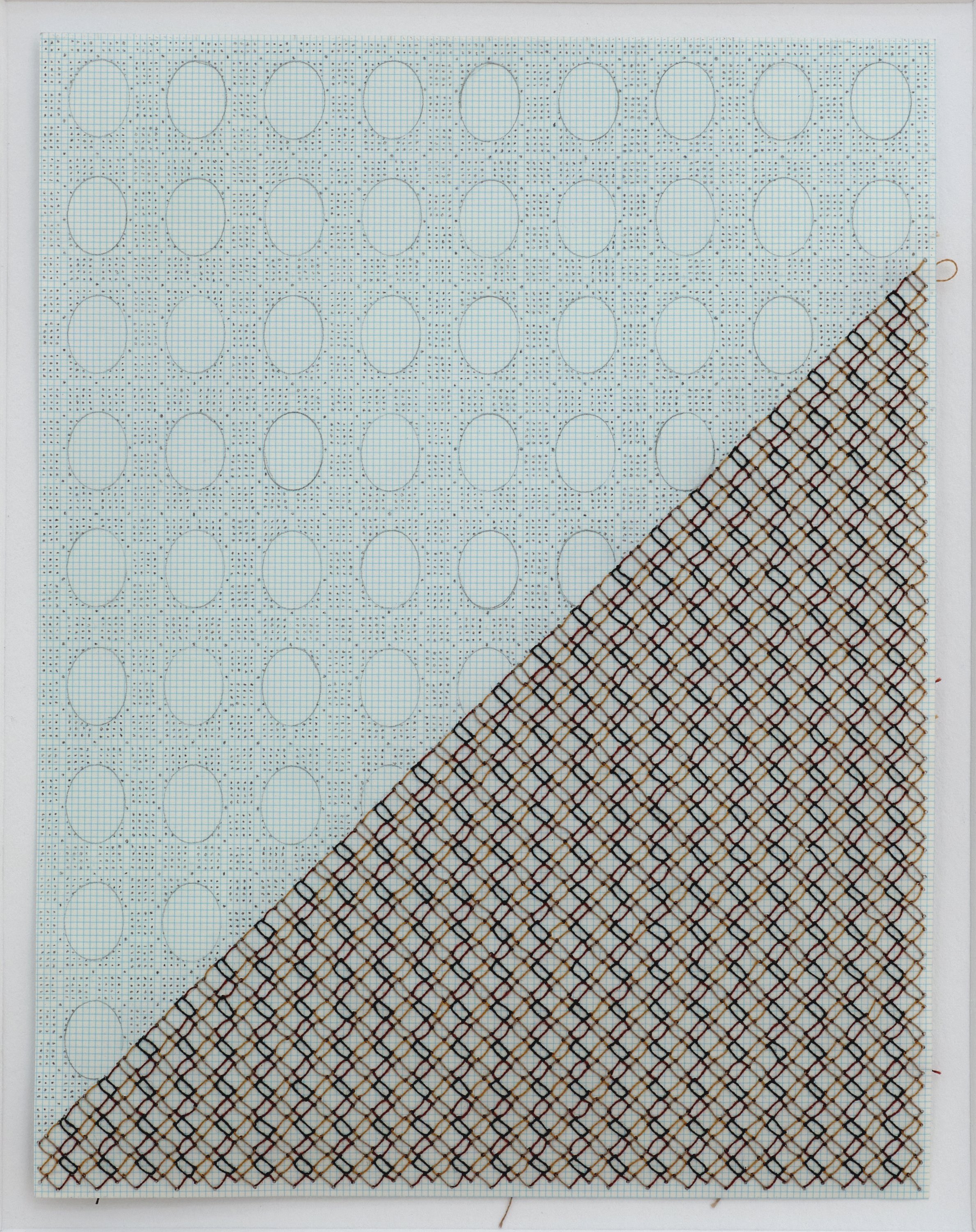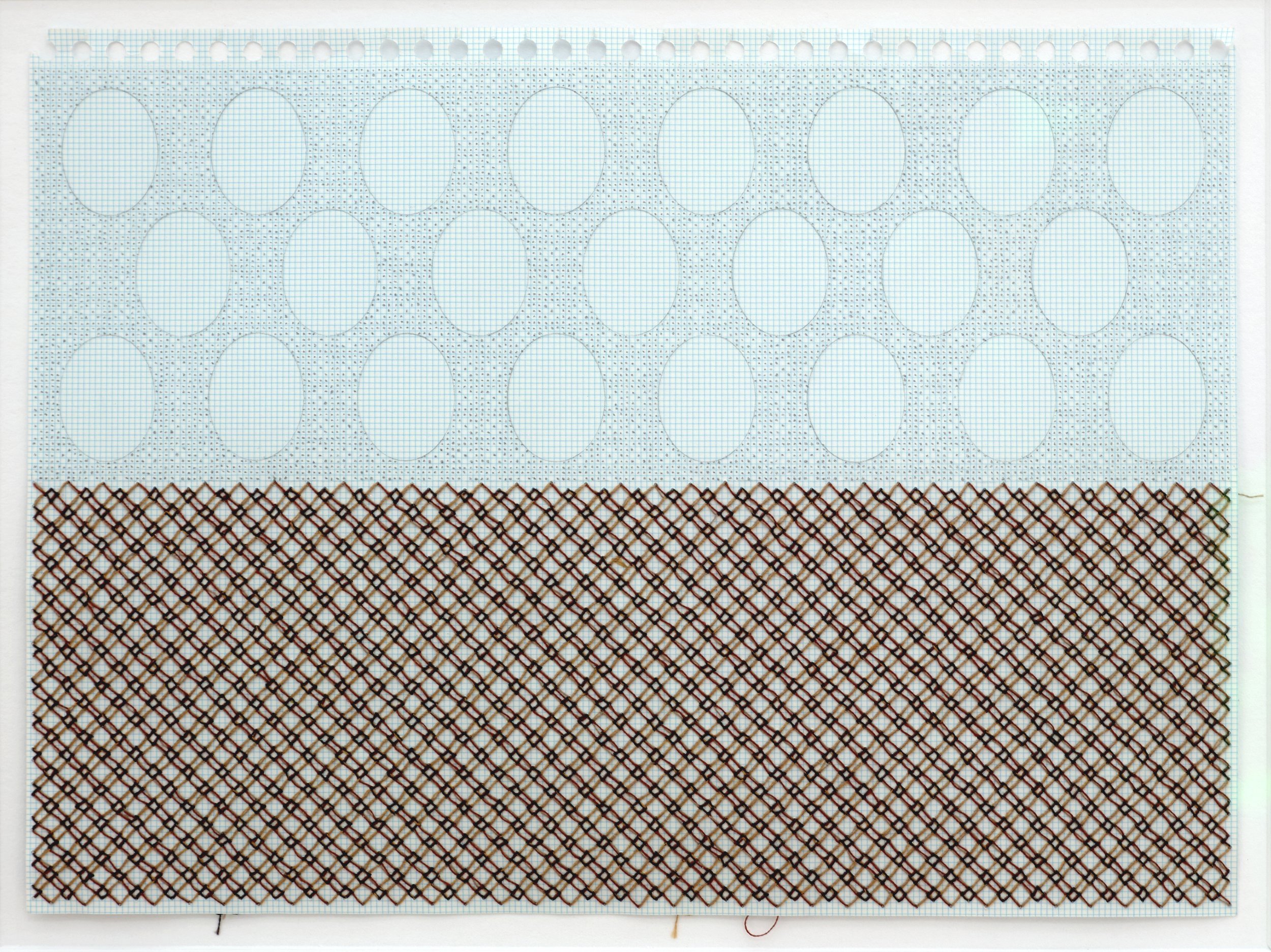EXHIBITIONS
KATE RUSSO, Storyteller
July 1st - August 6th, 2023
Sarah Bouchard Gallery is honored to present Storyteller, a solo exhibition featuring three distinct, yet interrelated aspects of Kate Russo’s meticulous practice: painting, drawing and stitch-work.
In a statement for the exhibition, Russo writes,
Time is the storyteller’s medium. It can be manipulated, drawn out, exploited - all depending on the artist’s narrative. As both an artist and a writer, time and its parameters are the framework inherent in everything I make. My abstract narrative-based artworks are appropriated from existing art historical themes, as well as patterns and architecture, then re-channeled through a feminist lens.
As a complement to the intensity inherent in Russo’s work, there exists an intelligent and playfully dark sense of humor, hinted at in some of the titles for her most recent paintings in The Male Gaze series. Examples include Men Spying on Women Bathing, Men Staring at Women from Behind, and Men Contemplate Women Reading. In these works, Russo identifies paintings by men throughout history that she finds particularly engaging (join us at the opening to learn more about how she chooses each work). She then pulls the palette from that work to create a gridded, abstract “portrait” of the artist using the palette of one of his own paintings. She creates these portraits in groups defined by the subject matter of the paintings.
There is an interesting dynamic at play in this series that emphasizes the role of the voyeur while simultaneously obfuscating it, shifting the more familiar question of ‘who is looking’ back onto the artist himself while simultaneously denying the viewer the ability to visually experience what is being described. In a way, content has been coded into color and pixel, but with paint on board, not light in screen.
Russo’s stitch-works explore other notions of narrative by interpreting book covers, envisioning architectural and interior spaces, and creating artists’ “rooms” inspired by the likes of Agnes Martin, Eva Hesse, and Louise Bourgeois. Taken together, this occasionally quiet collection of works delivers a raucous investigation of gender roles, time as medium, ‘handiwork’ and obsession.
EXHIBITION IMAGES
Install Image
Install Image
Install Image
Install Image
Install Image
Install Image
Install Image
Install Image
Install Image
Install Image
Install Image
Install Image
Install Image
Install Image
Install Image
Install Image
Install Image
Install Image
Men Spying on Women Bathing
Men Behold Women Reclining
Eva's Room
Agnes' Room
Corner No. 1
Corner No. 3
Novella No. 23
Novella No. 19
Novella No. 25
Louise's Room
Border No. 2
Novella No. 22
Men Observe Women Sewing
Border No. 1
Novella No. 16
Inhabitants No. 3
Inhabitants No. 9
Inhabitants No. 8
Men Watching Women Working
Men Contemplate Women Reading
Men Staring at Women From Behind
Men Equate Flowers with Femininity
Homestead No. 4
Homestead No. 5
Homestead No. 3
ARTIST STATEMENT
Kate Russo – Storyteller
Time is the storyteller’s medium. It can be manipulated, drawn out, exploited - all depending on the artist’s narrative. As both an artist and a writer, time and its parameters are the framework inherent in everything I make. My abstract narrative-based artworks are appropriated from existing art historical themes, as well as patterns and architecture, then re-channeled through a feminist lens. The works in Storyteller bring together three aspects of my work: painting, stitching and drawing.
The Male Gaze series uses palettes from pre-existing and well-known paintings that share a familiar motif from art history. Read from left to right, row by row, each painting of twenty ovals is a colorists journey through five hundred years (16th century to the 21st) of art history on a specific theme. By matching the palette used in the original painting, each individual oval represents a painting by a deceased male artist. I consider the oval to be his portrait. Themes include: Men Spying on Women Bathing, Men Staring at Women From Behind, Men Watching Women Working, Men Observe Women Sewing, Men Contemplate Women Reading, and Men Equate Flowers with Femininity.
When I’m stitching, I am influenced by Rozsika Parker’s book, The Subversive Stitch, which examines how needlework was used to tell stories and pass time through the centuries. More than any other art form, needlework is defined by the amount of time it takes to complete the work. Though often intricate and meticulous, stitching is also repetitive, laborious and even painful. In The Subversive Stitch, Parker asserts the act of stitching is subversive, giving women the time to think, plan and even plot. Time spent with a needle and thread in my hand is no different. Once I’ve worked out a pattern and the needle is passing in and out of the paper, I’m suddenly plotting and planning, scheming and subverting. The works themselves allude to this.
Inherent in all of the stitch work is a sense of anticipation: a book before it is cracked, a still room, an audience waiting for what’s to come. The Novellas, inspired by traditional book cover design, nod to the plotting and planning of their maker. In the Homestead, Rooms, and Corners series, I’m building sets, floorboard by floorboard, brick by brick, conveying a sense of solid structure, while also imparting the softness of needlework. Equally, I’m interested in the tension of known gender roles present in the work. Brick walls and parquet floors which are traditionally laid by men are, here, stitched by a woman. Agnes’ Room, Eva’s Room, and Louise’s Room, inspired by the works of Agnes Martin, Eva Hesse, and Louise Bourgeois, are the start of a new series of work, dedicated to female artists who had a subversive relationship with pattern, repetition, domesticity and obsession.
LISTEN
Check out Kate Russo’s studio playlist to hear what she listened to while creating the work for Storyteller.
WRITING
Standing in Kate Russo’s show earlier today at Sarah Bouchard Gallery, I found myself thinking of the title for an imaginary essay I’d like to write, called “The Floating World of Kate Russo.” I don’t think about that tradition in Japanese art all that often, which is why I was surprised when it came to mind. Looking it up when I got home, there it was, sure enough, described as “an imagined universe of wit, stylishness, and extravagance—with overtones of naughtiness, hedonism, and transgression.”
Russo’s work is about much more than that, of course, but this idea provided (for this viewer) at least one way in. For all of their outward sobriety and buttoned up surfaces, a closer look reveals a world of sensuality and a mischievous spirit, cloaked in a formally rigorous game plan.
I was told that some viewers have taken them to be digital prints, which I would liken to those other viewers who are surprised to discover that a Mondrian painting is actually very painterly. A close look at her surfaces reveals a very delicate but lively and burnished touch, where the brushwork evokes the idea of cool perfection, but in fact possesses a beguiling tenderness.
The fact that this quality is multiplied thousands of times over in each painting, unerringly—much less across the span of the entire show--only deepens the works’ visual, psychological, and emotional impact.
Similarly, at first glance, I thought the sewn works on Japanese graph paper were made by simply poking the needle and thread through the paper at the intersections of the grid, when in fact they are more often in a syncopated rhythm, like alternating 4/4 and ¾ time, that creates incredibly nuanced patterns; not to mention their use of broken color, in the manner of Seurat, that generates atmospheric and nameless colors that float just above the surface.
As well as that ephemeral orange glow around the painting in the first slide, generated by the side of the stretcher.
Well worth a visit.
- Mark Wethli, artist and independent arts writer
PRESS
Art New England
Review by Carl Little
